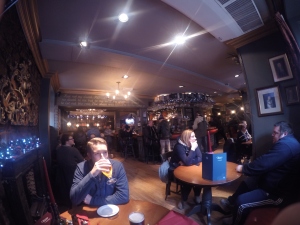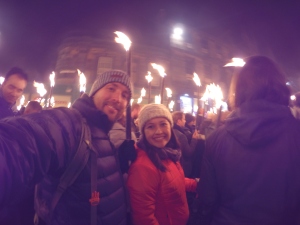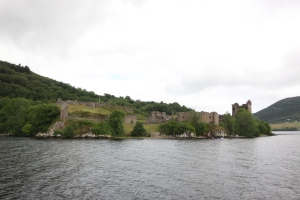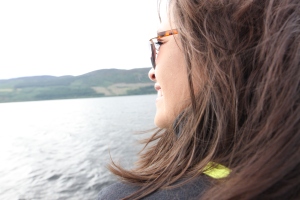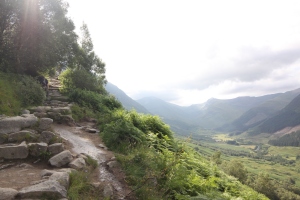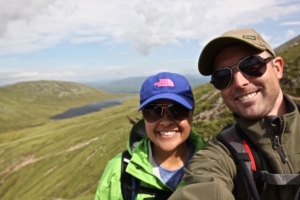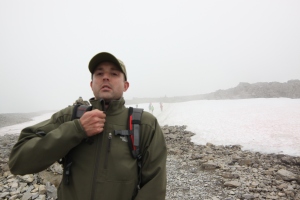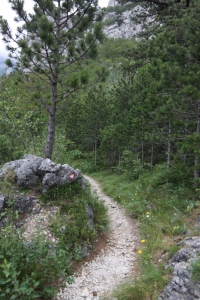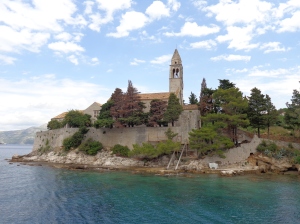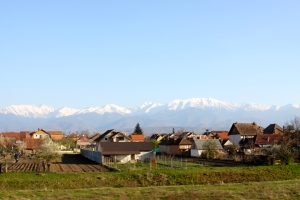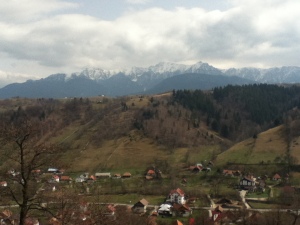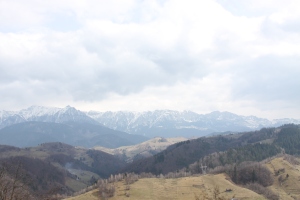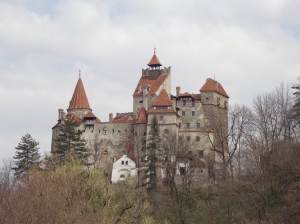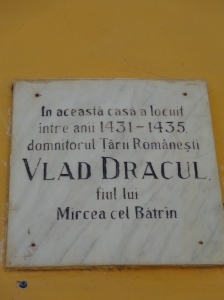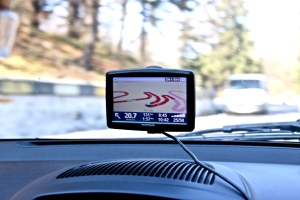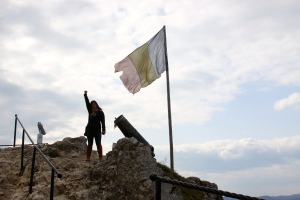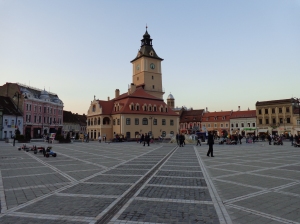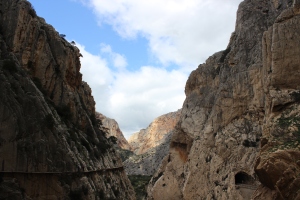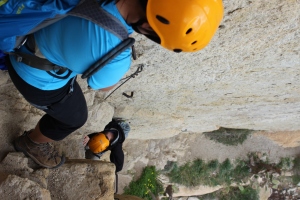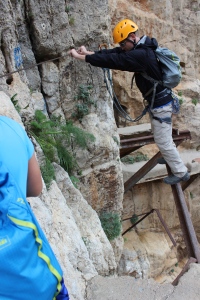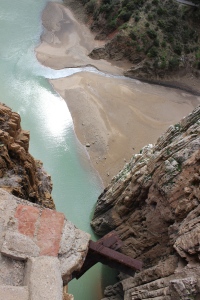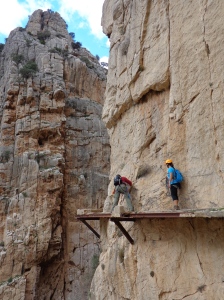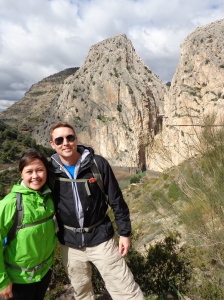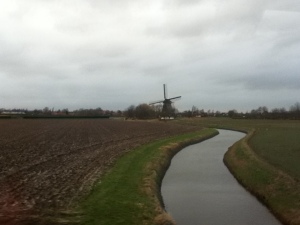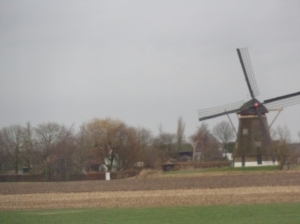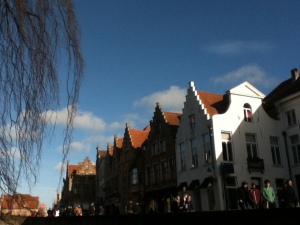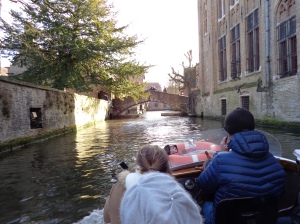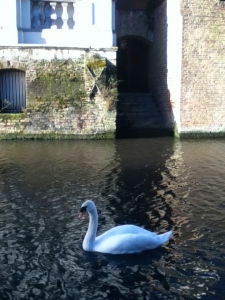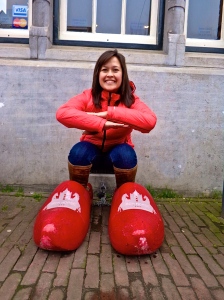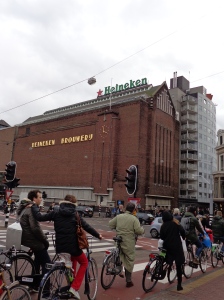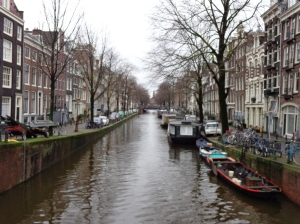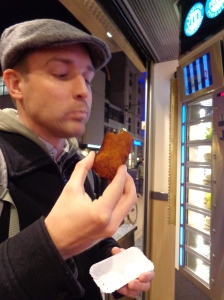“You want to hike in a national forest with a flyer?” he asked, but it really wasn’t a question and we both knew it.
Of course, the story of our trip doesn’t begin here. It begins at our arrival in Zagreb, Croatia while waiting in a baggage claim with only two belts for our final suitcase to arrive – the one with all our hiking gear. The end result was an attempt in futility; the bag never showed.
“This is very strange. We have another flight coming in tomorrow, maybe it will be on that one.”
She rambled off a few more lines of rehearsed sincerity. Lines we became accustomed to every time we checked the status of our missing items in the days that followed.
We set out, nonetheless, on our adventure of exploring some of Croatia’s most renowned parks. Our first stop was Plitvice National Park, a land of cascading water into pools of teal teaming with inquisitive fish with red fins. Everywhere were miniature bodies of aquamarine pouring one into another, a seemingly endless fall of liquid dominoes as verdure burgeoned in every speck of soil that could support it. The landscape revealed itself in hues of blue and green and always covered in dampness, that was the constant. A spectacular beauty only held in suspension by the continuous renewal of flowing water.
The majority of the paths that snaked their way through the park are of a simple rustic construction of log planks. Their simplicity lends not only to the aesthetics of the environment but also to the enduring hardiness of their purpose. The path itself if no larger than four feet wide, but somehow bolsters the continuous cycle of mobs that to explore the park’s splendor. Plitvice sees thousands of tourists from around the world daily.
Luckily for us the relatively flat surface was fine for our only walking shoes, a pair of Vans and sandals. Although it rained throughout the first day we were there, we remained only half saturated by the constant deluge. Our jackets were also apart of our missing luggage, but a hoodie and a fleece proved almost worthy of keeping us warm and dry. The second day in the park proved exceedingly better for weather, although by the end our feet were nearly run through – pun intended. If it weren’t for the constant beauty that surprised at every turn in the park I’m sure we would have felt the pain permeating from our feet miles before we actually finished the day. Plitvice is truly a park of aesthetic exploration.





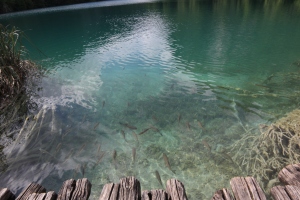



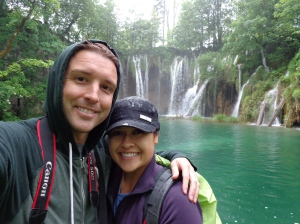
Hvala (pronounced wala or u-ala) was one of the first words I learned in Croatian, though my vocabulary still is only a few words in total. Hvala means thank you. A word or expression that should be learned for any country you visit. Hvala always gained an expression of gratitude from anyone I said it to. Although I could not communicate beyond this in Croatian I could communicate my appreciation for an action or assistance to someone who went out of their way for a foreigner in their country.
After Plitvice National Park we headed south. The freedom of the open road and a rental car in my mind is one of the only ways to visit a new country. If I had time I would slow my pace down by either cycling or hiking across the land, to see landscapes transform more subtly and to really understand the country on a more intimate level that can only be achieved by being in to constant contact with it. But, unfortunately, time is precious when your vacation has an expiration date and there is much to see and do.
We found ourselves in the small town of Seline, near the main gate to Packlenica National Park. Packlenica is renowned as a rock climbing paradise. Numerous competitions are held here for speed climbing annually, but the park is also known for its amazing network of strenuous trails that stretch for days. And unlike Plitvice, this park did not have a flat surface for our beach wearing footwear. Fortunately, we found an outdoor store not too far from where we were staying, but because it is the only outdoor sporting good store (a chain of stores really) in all of Croatia, their prices are ineluctably through the roof. Nonetheless, we were not going to let a lost suitcase – which contained our hiking boots, camelbacks, and all essential gear for our hikes – be the source of a failed adventure. So we purchased some brand new hiking boots for a very long hike. Ironically, the boots my wife and I bought also matched. They were the only ones of a decent quality and a swallowable price. So although we are experienced hikers, it appeared to any passerby on the trail as if we were a new couple that just started dating and that we were exploring activities together in our matching gear. I didn’t have a problem with that as much as I did with the newness my boots exhibited. I wanted to rub each boot in the dirt and mud just to make them appear somewhat abused and not so novice in appearance.
As we left the parking lot in our new mountain footwear and a backpack filled with plastic bottled water and snacks from the local minimart, we entered the trail which immediately ascended at a steady degree that warmed muscles in our lower extremities to a light burning sensation. We knew we would have a good hike. Cliff faces of beautiful granite towered on us from both sides, and dozens of rock climbers worked their respective routes with audacious ease and accuracy. Like Spiderman doppelgängers in training, I thought. The day was beautiful and warm. Sweat easily budded on our faces and fell to the ground. When we found a rhythm to our breathing our pace increased as nature unfolded itself to us. Trees and rock jutted up around us, yet pealed away like an onion revealing new layers to the park’s hidden secrets as we climbed further on. Three hours later we approached the Mountain Hut – a cabin for hikers who plan to continue further on into the wilderness. It’s a sort of starting point, like base camp at Everest, just relatively a lot lower in altitude. Inside it we found a man willing to assist us in our exploration of the park.
“You want to hike in a national forest with a flyer?” it was never a question, simply a rhetorical statement.
The man’s sinewy form with long lean muscles could only be formed from a life in the wilderness, though his face possessed a character that belied the hardships his body had endured.
“Do you have any jackets? The weather up top can change from sun to rain to ice in minutes,” he said almost prophetically.
“All we have is a hoodie and a fleece.” I bit down hard, clenching my jaw, knowing fully well that our gear was still missing from our flight and how we must appear to this man of the mountain in our new matching boots.
“Those aren’t jackets. I wouldn’t recommend going up. You two look young and healthy, let me see your flyer.”
I handed him the flyer I took from the rangers office at the main gate to the park, which etched only a couple of paths up to the Mountain Hut. He pointed to a trail off to the side and said to follow that, and then referring back to the flyer traced his finger along a ridge we could follow for some time before reconnecting back to the main trail again. We thanked him (hvala), and a little embarrassed for being ill-equipped we went on our way.
The trail turned into a fantastic trek up steep switch backs that eventually brought us to the ridge the mountain man had described with a magnificent view of the surrounding valleys. We stopped here to eat a small lunch and take pictures. However, only minutes passed before we saw dark clouds barreling slowly over the peaks to the north. We packed up quickly and began walking again, but only twenty or so minutes later the rains came followed by flashes of lightning and a cacophony of thunder. We quickened our pace but our new boots were beginning to work against us. Soreness and blisters were beginning to form, as well as our boots began to fill with water – soaking in from the tops of ours socks down – prevented a speedy descent. Eventually we ran into a young couple from Denmark slowly making their way across the ridge. We joked about the weather and walked with them until we were completely saturated through, then said our goodbyes so we could descend a bit quicker. We laughed and joked our way down as small streams converged into small rivers and as every inch of our being was soaked thoroughly from the deluge falling from the skies. After lurk trail reconnected to the main one, we made our way back to our car walking on what felt more like sponges than boots by then. The next day we gathered our still wet clothing from their places hung around the flat into plastic bags and headed yet further south along the coast.

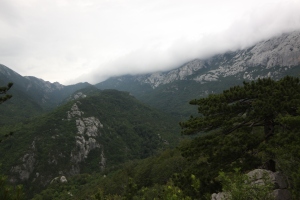


The lush green forests gave way to a more arid climate with smaller and sparser flora, but then the blue of the Adriatic sea drew all attention. We entered Dubrovnik in the early afternoon, and after checking into our flat we walked down the hundreds of stone steps into the old city and within its famous walls. For those of you who watch Game of Thrones, the castle of Kings Landing is based off the walls of Dubrovnik. This magnificent construction is tall, wide, and formidable. Waves of the Adriatic crashed against the heights of the stone changing from a light blue into explosions of white foam. Kayakers and sail boats with masts bent with wind cruised past the walls and outer lying islands as we leisurely walked along the top of the wall and taking pictures of the red roofs that inhibited the old city. Croatia is hemmed with more than 1200 islands. If the weather held, we would go kayaking ourselves the following day.

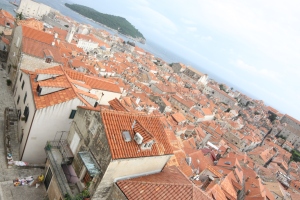



That’s when I woke the next morning to the sound of thunder rattling our windows. The storm seemingly followed us south out of the mountains and down the coast. We called the kayak touring company to see if they canceled the trip, and indeed they did. However, an hour and a half later they called back saying the tour was on again if we were still interested, and indeed we were. The storm appeared to be letting up and our planned day kayaking in the Adriatic returned.
We met our guide Vedran and a few others joining the tour at Gruz Harbor, where we hopped on a ferry and set out for Lopud island. Our group consisted of a unique menagerie of native English speakers all from different parts of the globe. There was a couple and a small group of three from Australia, a gentleman with an excellent beard from New Zealand, and another young lady from the U.K., and of course my wife and I represented the U.S. There were also three other girls from Malta, but after spinning in circles in their kayaks and one abruptly crashing back into the shore we set out from they decided not to do the trip after all. Not that one of the Australians did any better as he flipped his kayak over five times. I thought he was just messing around, but I later discovered he was just really bad at turning. He thought he needed to lean into it.
Eventually, we paddled our way across a long strip of ocean to another island where our guide surprised us with a hidden cave.
“You have to swim under the rock and just aim for my legs on the other side. What ever you do don’t surface until your past me.”
Vedran’s words were of no comfort as I looked at the water crashing into a wall of rock. No entrance seemed possible. I felt as if I were in a Tolkien story and I had to recite something in elvish for the path to show itself. But one by one we went under water, holding our breathe, and swimming hard against the current rushing in and out of the cave, and focusing our goggles for the shadowy body suspended ahead in the blue water. I have never been a strong swimmer. Although I swam my hardest, the current pushed my body to the side of Vedran’s floating body. I tried to correct my course but by now the current began lifting my body toward the surface and if it weren’t for the hand of Vedran acting as a cushion between the rock and my head, I would have ended up coloring the water red. When I surfaced I had entered a nearly black room of rock only illuminated by the glowing pool of water from which we swam into and now treaded. The cave was unworldly, an alien environment that possessed an enchanting, even seductive allure that had to be experienced if for but a brief moment in time. Much in the same way Croatia itself must be experienced. Hvala.


This by the way is their famous beer, which I could never pronounce correctly.



